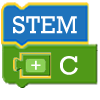The STEM+Computing Partnership (STEM+C) program seeks to advance multidisciplinary integration of computing in STEM teaching and learning through applied research and development across one or more domains. The goal of this project is to define the concepts and skills needed for computer science education. The project integrates the knowledge and skills for computer science with mathematics learning goals. This project presents a unique opportunity to integrate such practices with an existing, well-supported and well-designed elementary mathematics curriculum. This addresses the practical needs of schools and teachers in terms of time constraints. The concepts will be organized into a learning trajectory for K-5 computer science and mathematics that examines areas of overlap such as abstract thinking. This project will synthesize prior work in the field and use assessments of students’ work with computational thinking and mathematics activities in targeted concepts to develop a framework for understanding students’ learning. The project also includes piloting activities connected to the learning trajectory to integrate mathematics and computational thinking practices and concepts.
The research plan begins with a literature review to understand the major goals of existing computer science materials and findings from research on teaching and learning in the early elementary grades. The review will identify points of compatibility for mathematics and computer science in elementary settings and build possible learning trajectories with accompanying learning materials. Learning module design includes participation from elementary teachers at the school sites. Selected learning trajectories will then be tested in classrooms with integrated mathematics and computational thinking activities and lessons. Classroom observations, teacher interviews, measures of students’ knowledge, and surveys of attitudes about computer science will be used to support the learning trajectory design and analysis.




